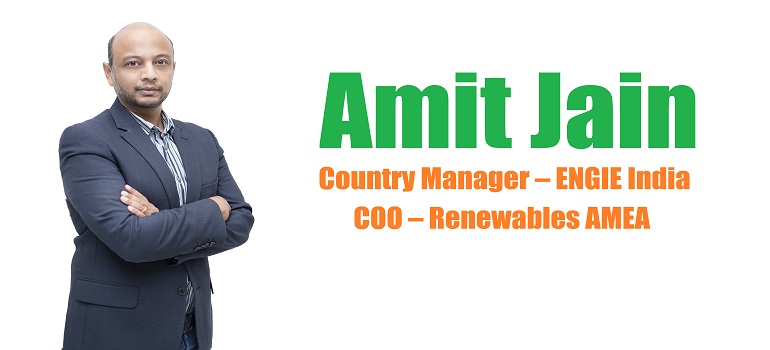
The combustion of fossil fuels to create power and heat produces a major portion of the greenhouse gas emissions that blanket the planet. Gas, coal, and oil, which account for more than 75% of the world’s greenhouse gas emissions and nearly 90% of all carbon emissions, are by far the most significant contributors to global climate change. To avert the worst consequences, we must relinquish our reliance on fossil fuels and invest in sustainable, clean, and reliable alternative energy sources. Bearing in mind also that decarbonising our economy is a massive undertaking, there is no single solution; a broad portfolio strategy is a necessity.
“Decarbonising our economy is a massive undertaking, there is no single solution; a broad portfolio strategy is a necessity.”
The world economy is propelled forth by energy in the form of electricity and primary energy resources. The three components that make up total energy production and consumption are electricity, transportation, and heating, and electricity accounts for a considerable portion of each. Although fossil fuels currently account for more than 80% of worldwide energy output, cleaner energy options are gaining traction. By 2050, the International Renewable Energy Agency (IRENA) projects that renewable energy will provide 90% of the world’s electricity. Renewable energy currently accounts for about 29% of total electricity generation.
India, on the other hand, is taking certain actions to transition to a low-carbon energy system that is both sustainable and affordable. By 2030, India has pledged to reduce its greenhouse gas (GHG) emission intensity of GDP by 33% to 35% from 2005 levels, as well as increase the non-fossil contribution to its power generation capacity to 40%. The Government of India has adopted many actions under the National Action Plan on Climate Change (NAPCC) to attain these goals. It has placed a strong emphasis on improving energy efficiency through a number of demand-side management initiatives and stringent energy efficiency regulations. In addition, it is pushing electric and hybrid vehicles through financial incentives and setting higher vehicle efficiency criteria. These goals may be ambitious, but the good news is that India’s sustainable energy transformation is well underway.
Solar energy is an unlimited source of energy with low carbon dioxide (CO2) emissions that have little impact on the environment or local communities, while meeting individual electrical demands responsibly. It provides more than 20 times the energy required to meet the world’s energy demands per year. Despite this, the technology only accounts for 1% of worldwide power generation capacity. There is an urgent need to boost the contribution of this renewable, and clean energy source at every stage of the value chain, from research to manufacturing to installation. By 2050, solar energy might account for up to 16% of global electricity output, from 1.8% in 2016 according to the International Energy Agency. Solar energy is well suited to the carbon emissions problems, and it has a role in the energy mix as one of the pillars of a long-term energy transformation. In May 2019, India had added 65-70 GW of wind and solar capacity, with wind and solar accounting for 9.5% of total energy output.
“With the help of battery storage solutions, renewable energy supply round-the-clock (RTC) overcomes the intermittency associated with solar and wind”
Renewable energy is sporadic by nature. Because they are influenced by geographical location, time duration, and climatic conditions such as when the sun is shining, or wind is blowing, the output power generated by various energy sources is unpredictably variable. However, renewable hybrids have a significant role to play here. A hybrid system combines wind and solar energy with another generation or storage resource. With the help of battery storage solutions, renewable energy supply round-the-clock (RTC) overcomes the intermittency associated with solar and wind, which create electricity only when there is enough sunshine and wind. It can deliver both baseload and flexible power in this way. In 2018, India’s ministry of new and green energy released a policy on solar-wind hybrids. India is also establishing the groundwork for critical developing technologies like battery storage, hydrogen, cement, low-carbon steel, and fertilisers to scale up. The country is in a unique position to lead the world in renewable batteries and green hydrogen.
“India could easily meet a 5 million tonne green hydrogen demand, allowing it to replace grey hydrogen in refineries and fertiliser plants”
Green hydrogen will play a critical role in reaching net-zero emissions and decarbonising hard-to-abate industries. India intends to become a global centre for the production and export of green hydrogen. India could easily meet a 5 million tonne green hydrogen demand, allowing it to replace grey hydrogen in refineries and fertiliser plants. This 5 million tonne reduction will result in a CO2 emission reduction of 28 million tonne. And as the green hydrogen economy matures, this share will rise, resulting in 400 million tonnes of CO2 abatement by 2050.
India is pioneering a new economic development strategy that could sidestep the carbon-intensive paths taken by many countries in the past and serve as a prototype for other developing economies. In the early 2010s, subsidies for gasoline and diesel vehicles were phased out, and incentives for electric vehicles were established in 2019. India’s comprehensive energy efficiency programme has resulted in lower energy consumption and emissions from transportation, buildings, and key sectors. Government efforts to offer fuel gas for cooking and heating to millions of families are allowing a smooth transition away from conventional biomass such as burning wood. As a result, by 2030, India might have a market worth up to $80 billion thanks to these and other low-carbon technology.
AUTHOR

Views expressed in this article are those of the author and do not necessarily reflect those of the editors or publishers.

